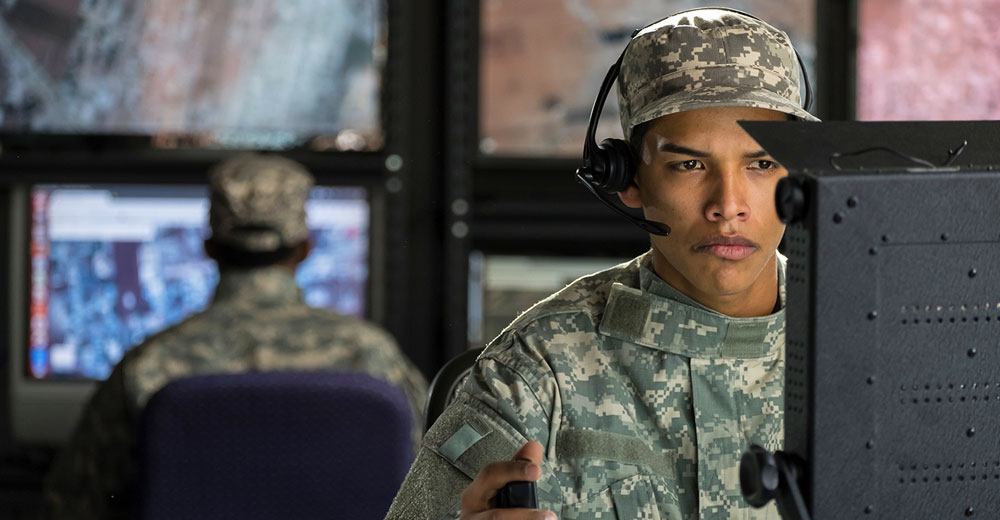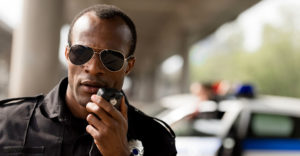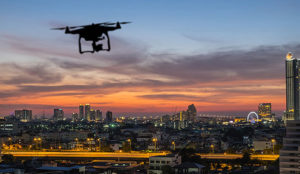A company that uses artificial intelligence to detect firearms in active shooting settings has been awarded a US$1.25 million grant by the U.S. Air Force to integrate the technology into existing unmanned aerial vehicles.
This is the third R&D grant the Air Force has awarded ZeroEyes, whose main line of business is protecting schools with its gun detection video analytics platform.
With the ZeroEyes technology, the camera in a flying drone can be used to detect a firearm the moment it’s visible, report the sighting to a weapons expert at an operations center to assess the threat and instruct the drone to take a course of action — all within three to five seconds.
“A quarter of active shootings take place on government property, and we will take every step possible to protect our airmen,” Capt. Nicholas Martini, chief innovation officer at Dover AFB said in a statement.
“ZeroEyes’ technology not only provides another layer of security,” he continued, “it will also enable us to reduce our investment in security personnel and use our manpower for more mission-critical tasks.”
In addition to the Dover award, ZeroEyes has grants of $750,000 for drone-robot enabled active shooter deterrence at Ellsworth AFB, S.D. and $1.2 million for unmanned ground vehicle automated threat detection at Minot AFB, N.D.
Robo Dog
“The DoD was impressed with what we had and asked us if we could put our technology on mobile cameras, on unmanned aerial systems and unmanned ground vehicles,” explained ZeroEyes Chief Revenue Officer Co-Founder Sam Alaimo.
Alaimo, along with the four other founders of ZeroEyes, are all former Navy SEAL team leaders. He noted that his company’s technology could be very valuable in a combat zone.
“When you’re out on a mission, the base is often undermanned for security so to have an extra layer of security with a drone that can detect someone with a gun in a crowd of people without them would be a major asset,” he said.
He explained that the Air Force grants will enable ZeroEyes to adapt its technology, which is currently used on stationary video cameras, to mobile platforms, as well as on a robotic dog. “First responders like the idea of walking a dog with gun detection into an active shooter situation instead of a human being,” he said.
Adaptation to moving vehicles could also open up other commercial possibilities for ZeroEyes. “We get a lot of third-party logistics companies and sporting arenas asking for the technology,” Alaimo explained. “Sporting arenas want the ability to have a drone follow a shooter around the stands.”
Proactive Solution
Last week, ZeroEyes announced that its gun detection system was being deployed in Michigan in the Vassar Public Schools, located 45 minutes from Oxford High School, the scene of a mass shooting in November 2021 in which four students were killed and seven people were injured, including a teacher. Following the shooting, Oxford, launched a pilot program with ZeroEyes.
“I stumbled on ZeroEyes at a superintendent’s conference. I didn’t know a thing about them,” confessed Vassar Public School Superintendent Dot Blackwell.
“What I find amazing about the product is that it’s very proactive,” she told TechNewsWorld. “Someone who is ex-military or law enforcement is watching frames from our cameras 24/7, and I and law enforcement will be alerted in seconds.”
“In these situations, the first few seconds are vital in stopping them,” she added.
Alaimo explained that the ZeroEyes technology can be used with any existing security camera system in a facility. “It can identify an object and send an alert to first responders in three to five seconds,” Alaimo said. “However, we have a human in the loop because no algorithm will ever have 100% certainty on anything.”
He noted that ZeroEyes’ machine learning model has been trained with thousands of samples — everything from snub-nose revolvers to semi-automatic pistols to submachine guns to assault rifles to shotguns and hunting rifles.
“When the algorithm sees what it thinks is a gun, it’ll send an alert to our monitoring center,” he continued. “The center is staffed with veterans and law enforcement personnel who are very comfortable in these situations. They have the final say on what’s a gun. That way, we make sure our clients never get a false positive.”
“That process is very quick,” he added. “The camera will see the gun. The image will be sent to our monitoring center, and the monitoring will dispatch to the client, all in three to five seconds.”
Privacy Preserved
Although images are being piped into ZeroEyes’ monitoring center from all over the country, it can accommodate the workflow with a modest number of analysts.
“The algorithm is such that we don’t get overwhelmed with false positives,” Alaimo said. “It’s manageable to the point that we’re able to scale to a million cameras without a massive monitoring center.”
“Right now,” he continued, “we’re in 30 states and we have less than a dozen analysts in our monitoring center.”
“We’ve identified hundreds of guns, some of them real, some of them not real, some of them fake, some of them squirt guns,” he added.
After identifying a potential threat, the threatened system can be notified in a number of ways.
“We have multiple mechanisms to notify clients, in case some of them don’t work,” Alaimo noted. “There’s a call tree to make sure that no matter what happens, we get somebody on the phone. We also have a mobile app that sends notifications with an image of the shooter, the exact location of the shooter, and a bread crumb trail.
“We also have desktop notifications and integration with an organization called Rapid SOS,” he continued. “They’re integrated with 93% of the public safety answering points around the country.”
“A school will often ask us to send our alerts to Rapid SOS,” he added, “so first responders can get the notification at the same time as a principal so both can enact their security protocols simultaneously.”
The combination of artificial intelligence and surveillance video can raise red flags among privacy advocates, but ZeroEyes appears to have those bases covered. It says its AI does not record, store, or share video or images of students or others, ensuring that privacy is maintained.

























































